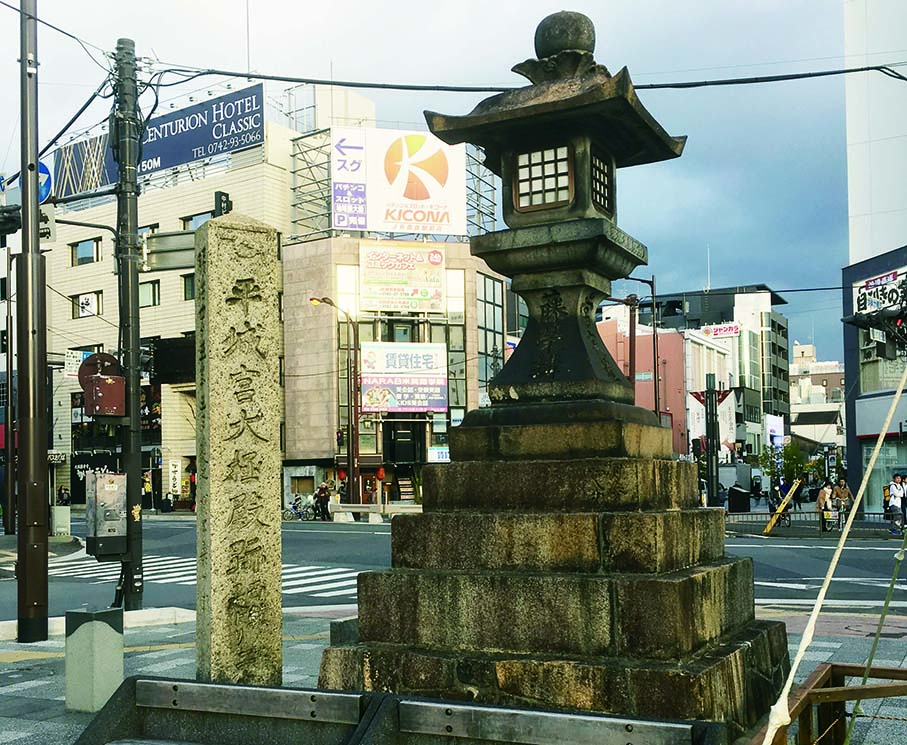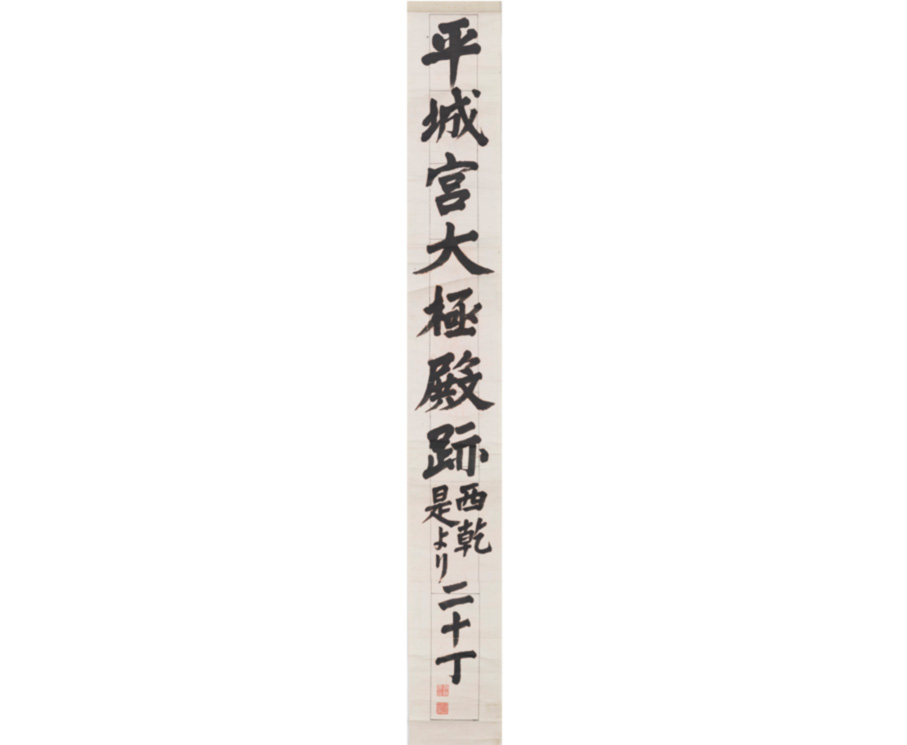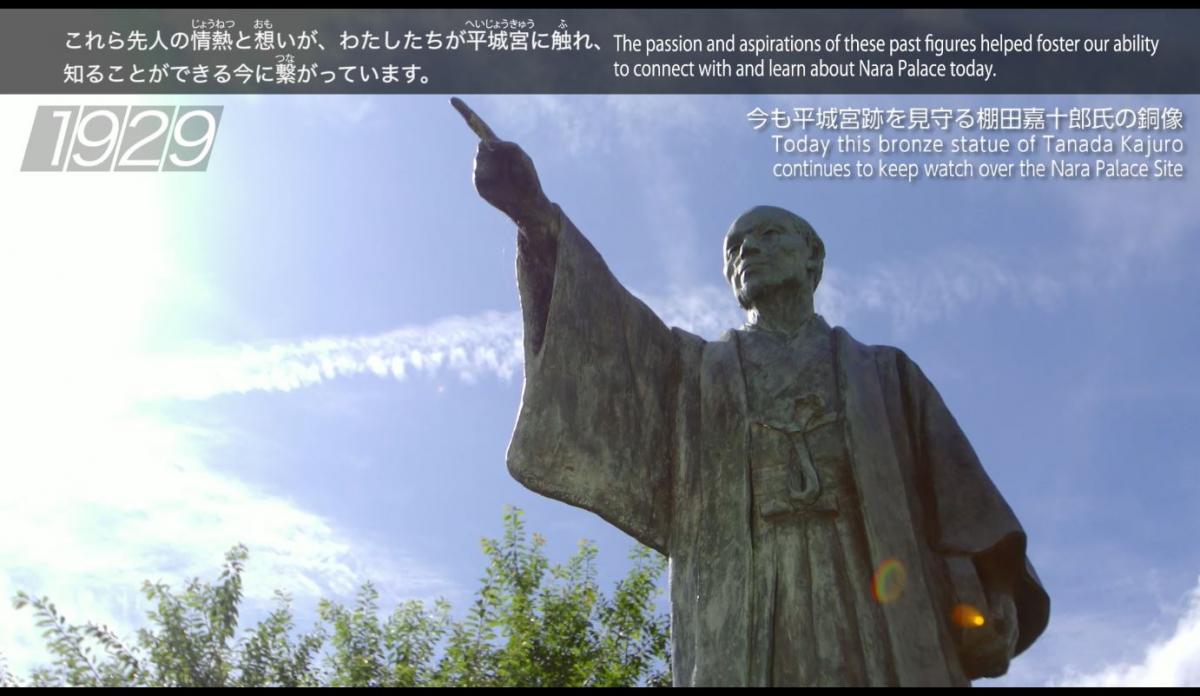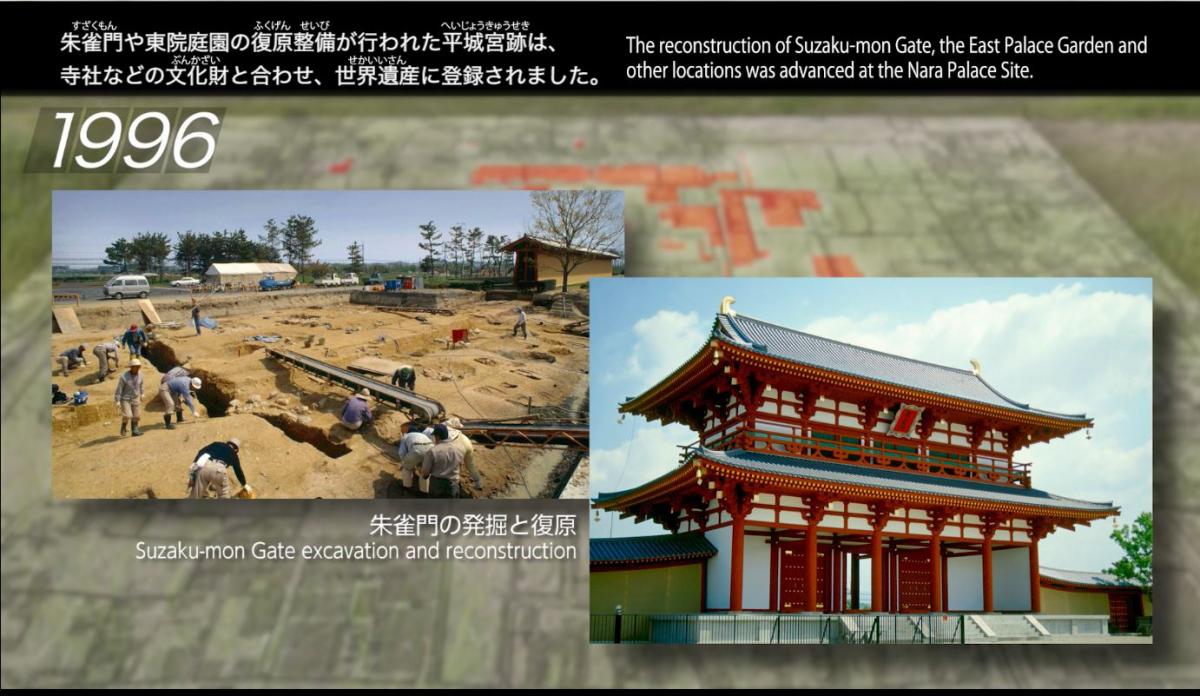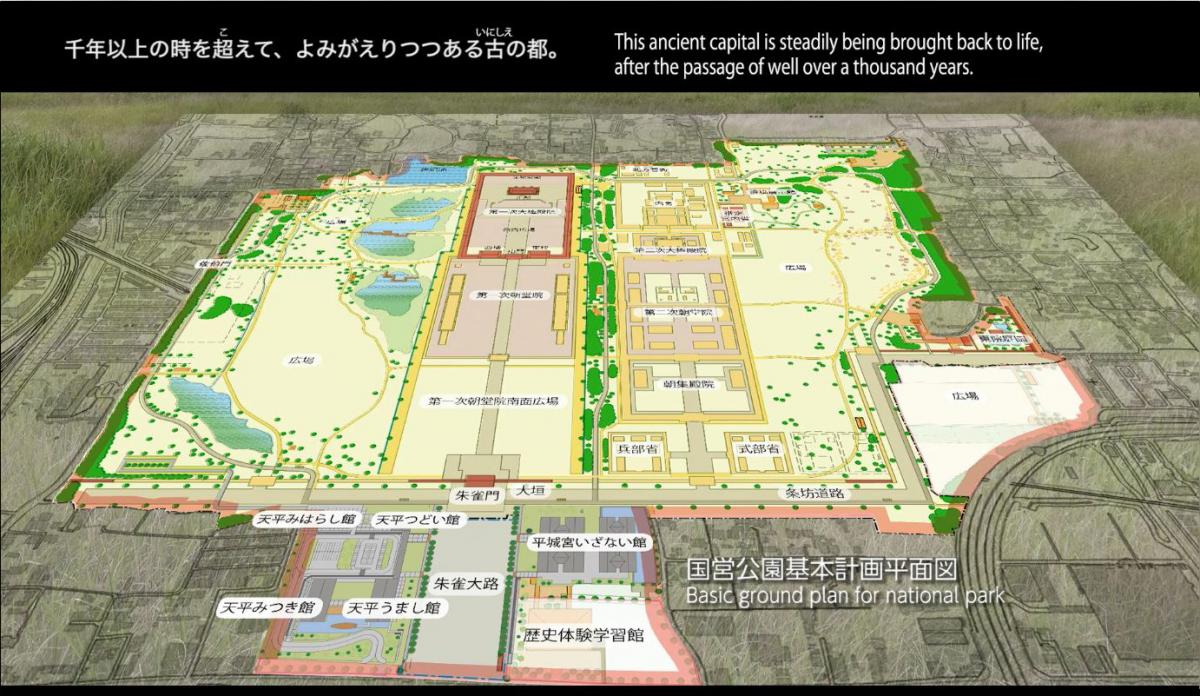IV. Preservation for the Next Generation
IV. Preservation for the Next Generation
In order to pass on Nara Palace and Heijo-kyo to future generations

■ Investigation and Research Continues into the Future
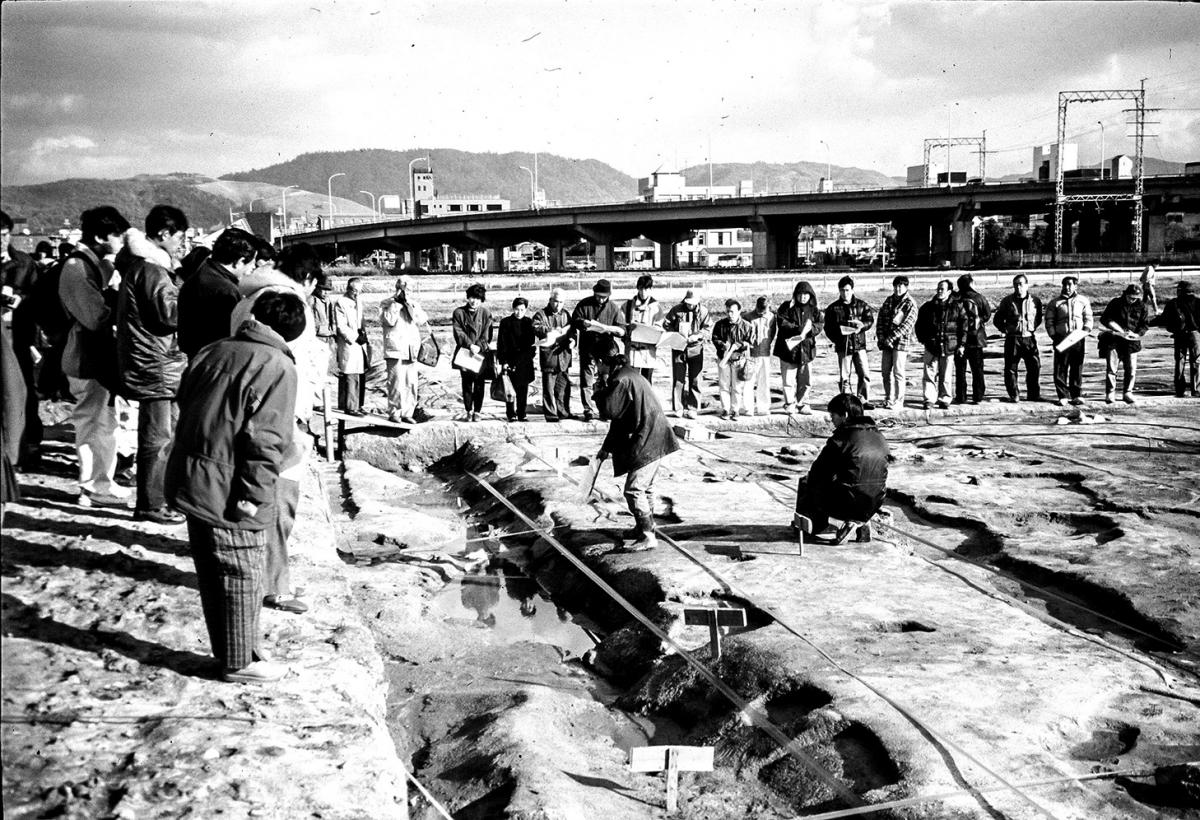
The unyielding efforts towards preservation and research by our predecessors have led towards the Nara Palace Site as it is today. It is up to us to make sure it survives into the future.
○ The Start of Research into Nara Palace and Heijo-kyo
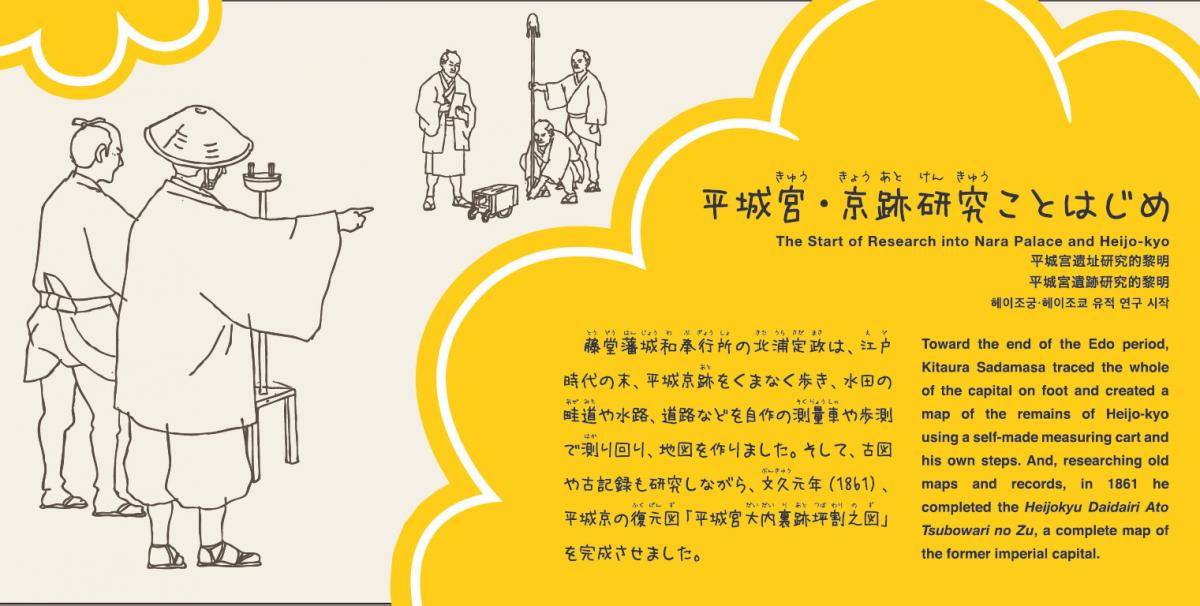
Toward the end of the Edo Period, Kitaura Sadamasa traced the whole of the capital on foot and created a map of the remains of Heijo-kyo using a self-made measuring cart and his own steps. And, researching old maps and records, in 1861 he completed the Heijokyu Daidairi Ato Tsubowari no Zu, a complete map of the former imperial capital.
○ Kitaura Sadamasa (1817-1871)
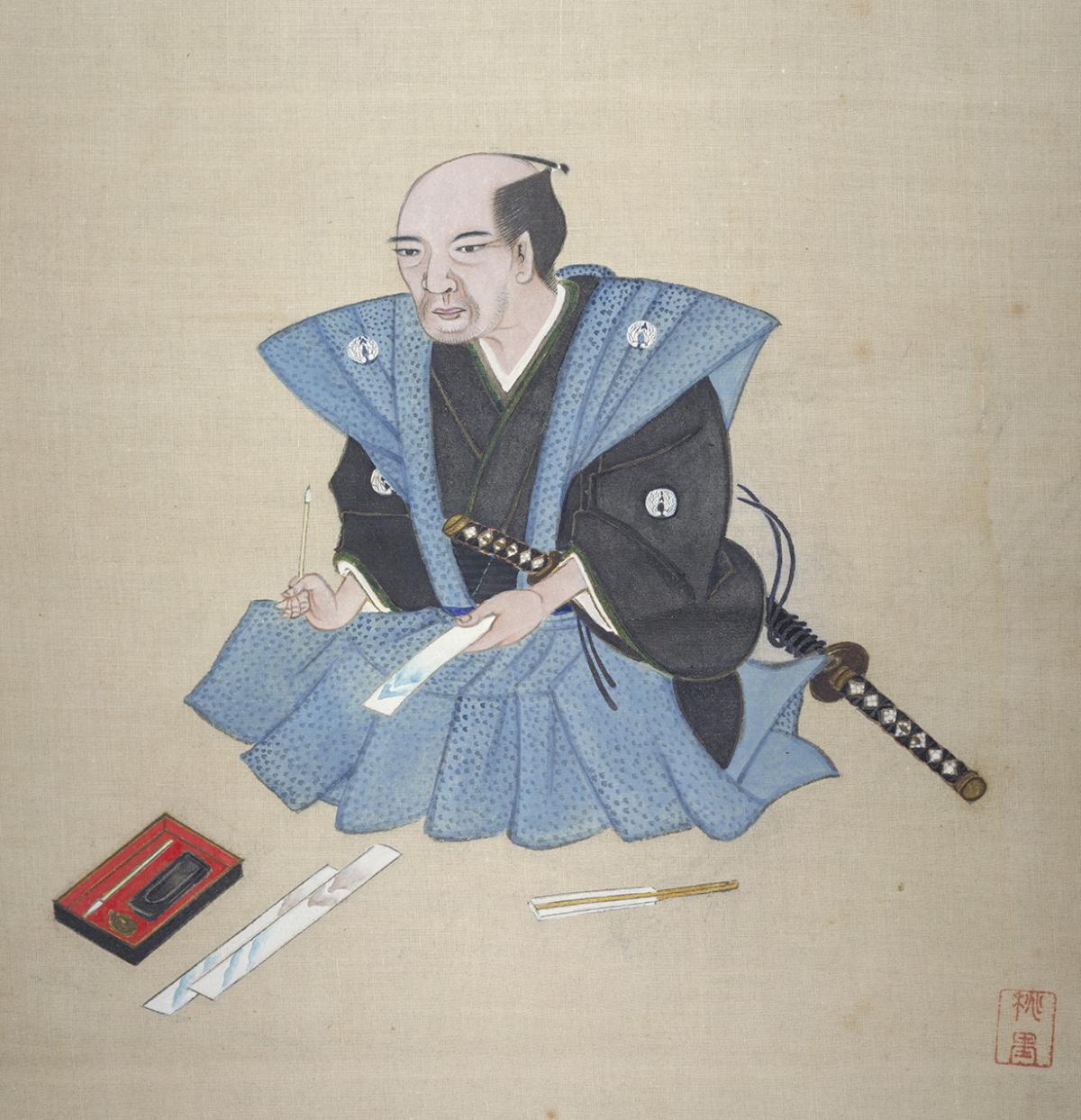
Kitaura was native of the Furuichi district of Nara, who worked as an office clerk in the Tsu Domain Jowa magistrate’s office. He ranks as a pioneering figure in the field of empirical research into the remains of Nara Palace and the Heijo-kyo capital.
○ Sakimura ezu (Stored at the Saki-cho Irrigation Association)
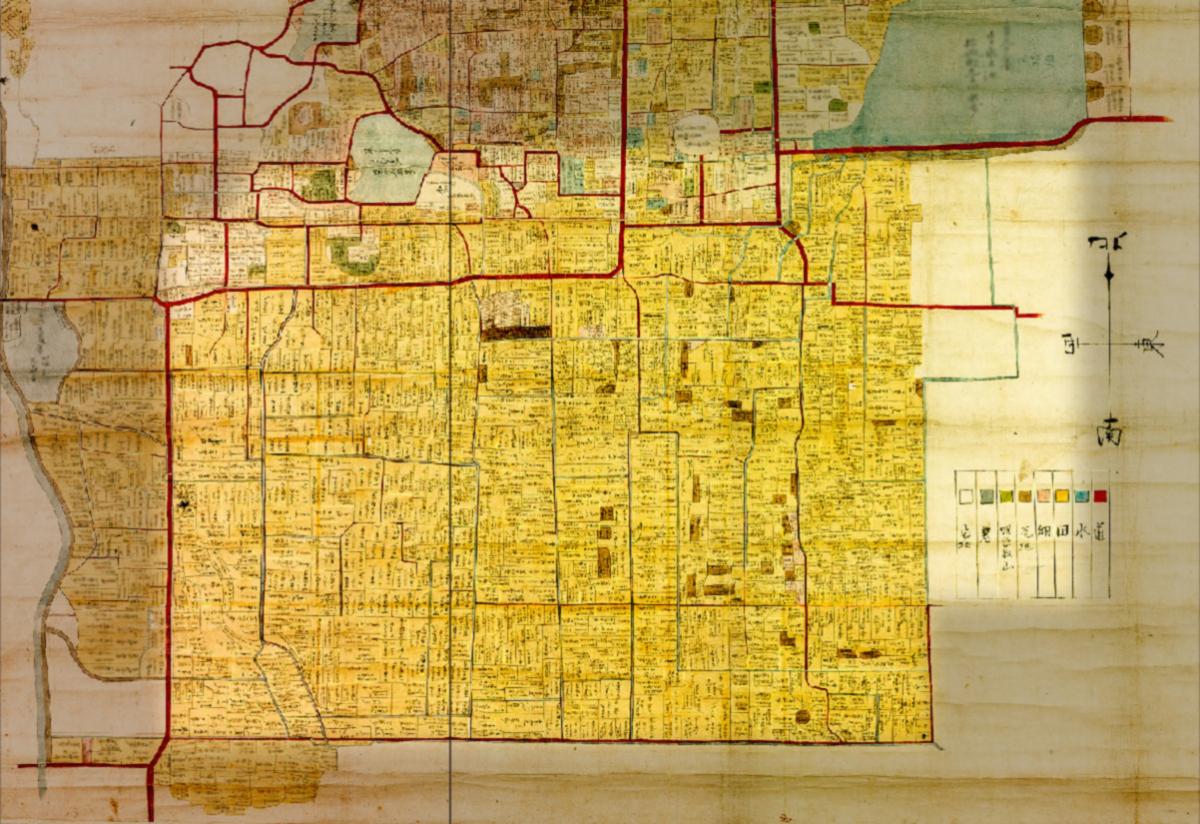
Different sections of a land-use map from 1876. The rise seen in the platforms of the Dainiji Daigokuden and the eastern part of the Chodo-in is a plot of grass.
○ Heijokyu Daidairi Ato Tsubowari no Zu (Nara Palace Site Zoning Map) (copy)
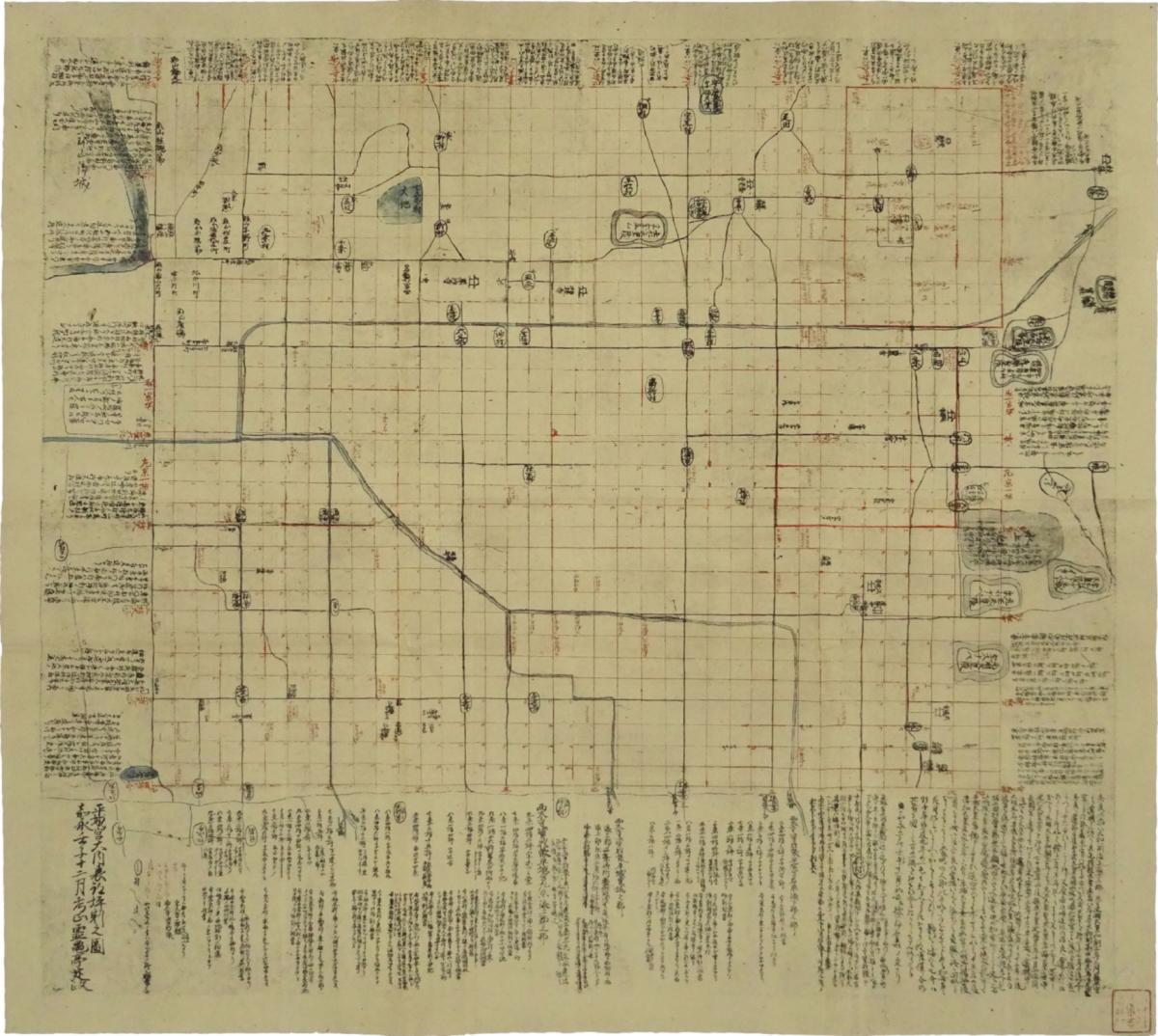
○ Tempyo Jaku Measure
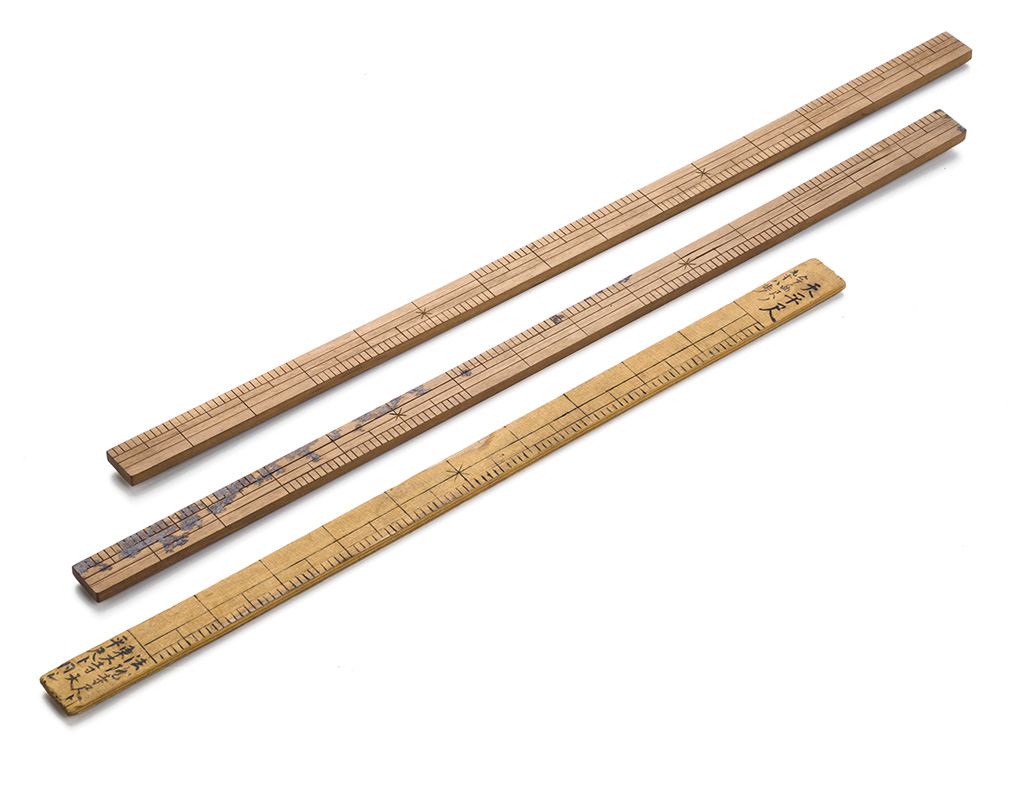
An antique measuring instrument crafted by Kitaura Sadamasa. One shaku (jaku) is the equivalent of around 30 cm.
○ Matsu no Ochiba
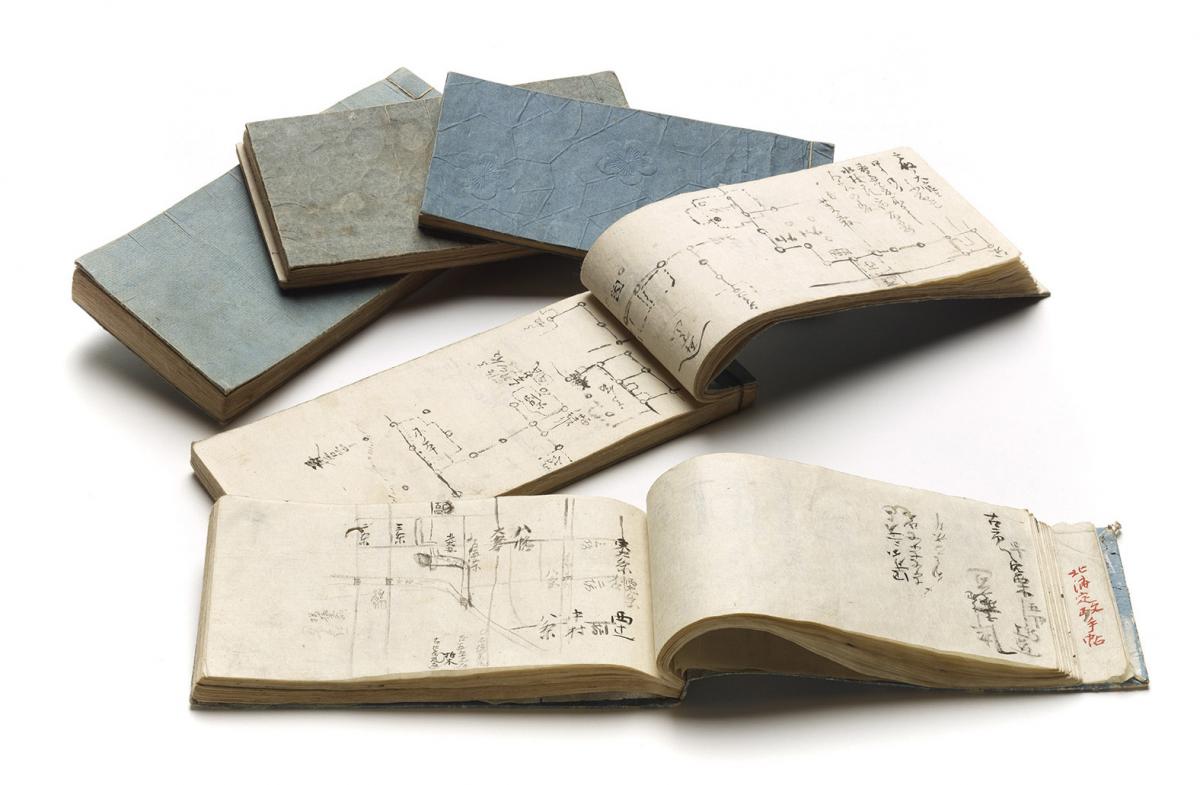
Kitaura Sadamasa used his own measuring cart, steps and other means to wander about and take measurements of footpaths between rice fields, water channels, roads and other areas lying above the remains of the Heijo-kyo capital, eventually producing a map. Matsu no Ochiba refers to the notebooks used to record the findings during this work. The notebooks were compact in size and convenient to carry around.
○ Sekino Tadashi and Discovery of the Nara Palace Site
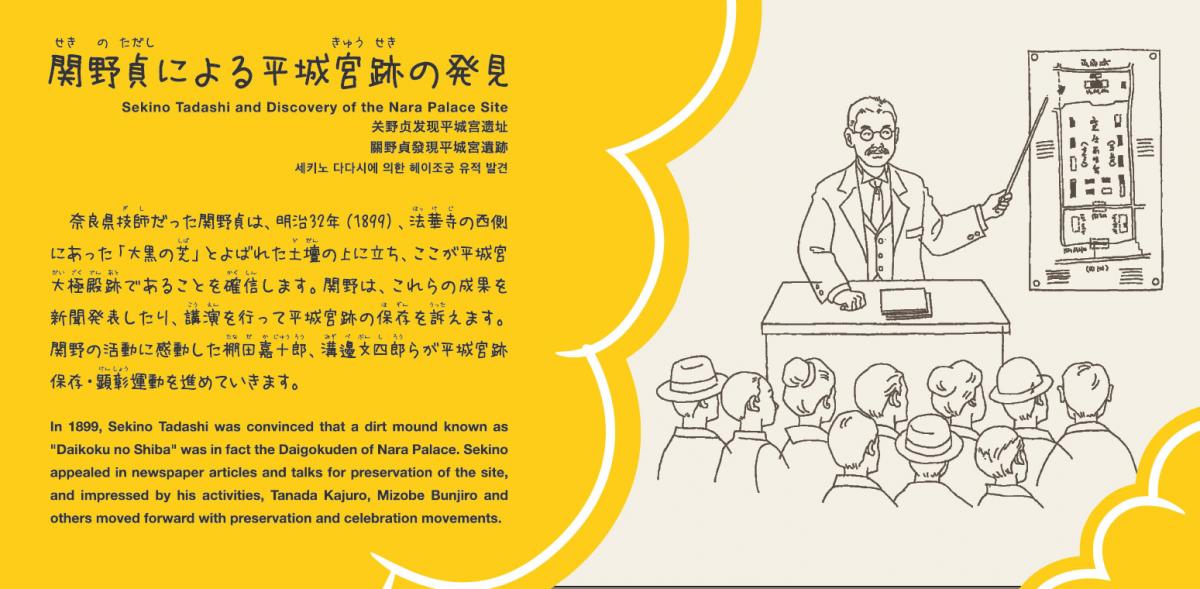
In 1899, Sekino Tadashi was convinced that a dirt mound known as "Daikoku no Shiba" was in fact the Daigokuden of Nara Palace. Sekino appealed in newspaper articles and talks for preservation of the site, and impressed by his activities, Tanada Kajuro, Mizobe Bunshiro and others moved forward with preservation and celebration movements.
○ Tanada Kajuro (1860-1921)

Nara Park gardener from what is now Sugawa-cho, Nara
○ Mizobe Bunshiro (1852-1918)
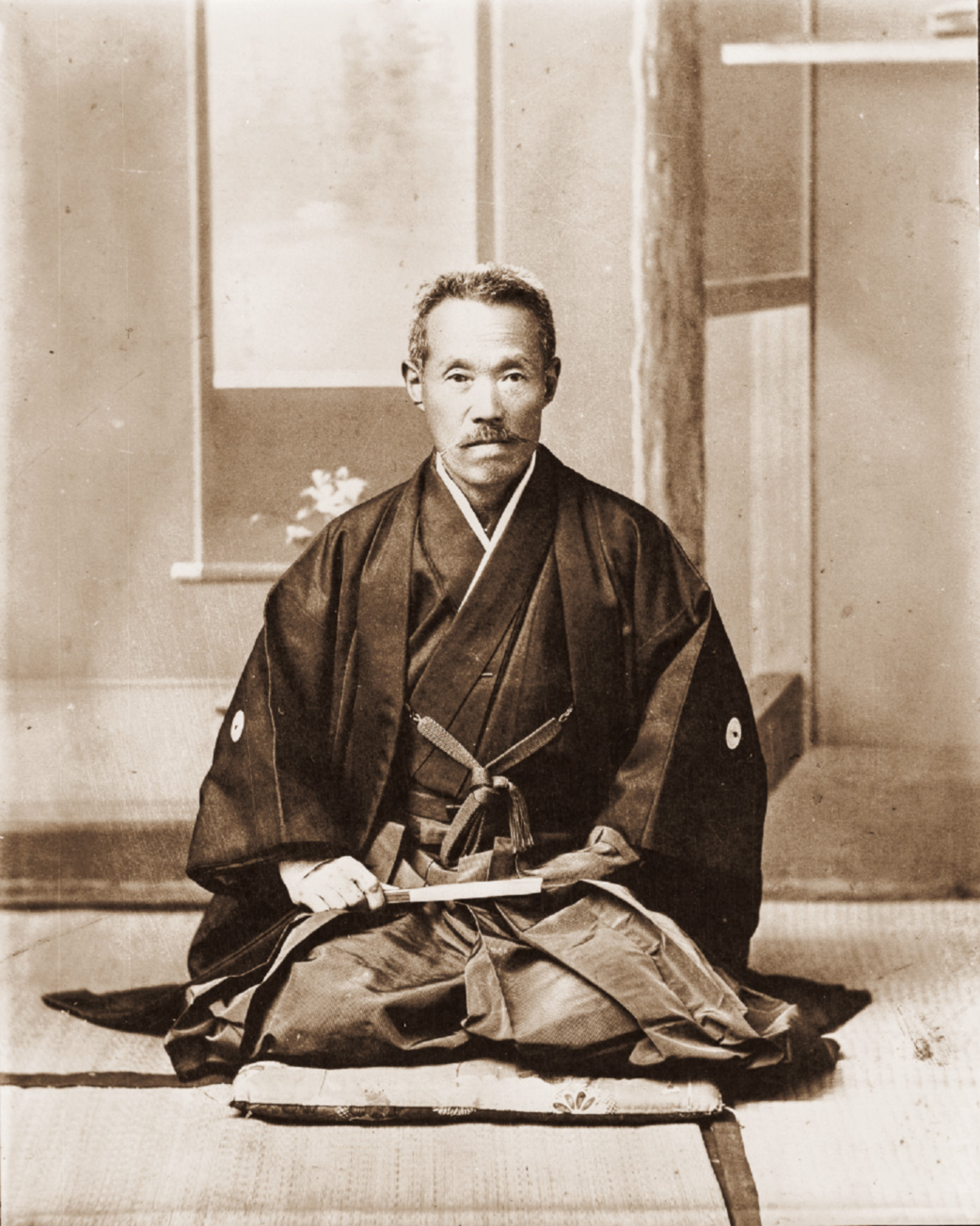
Tea merchant from Saki, Nara. Honored together with Tanada Kajuro for his contributions to the preservation of the Nara Palace Site.
○ Information Leaflet Distributed by Tanada Kajuro
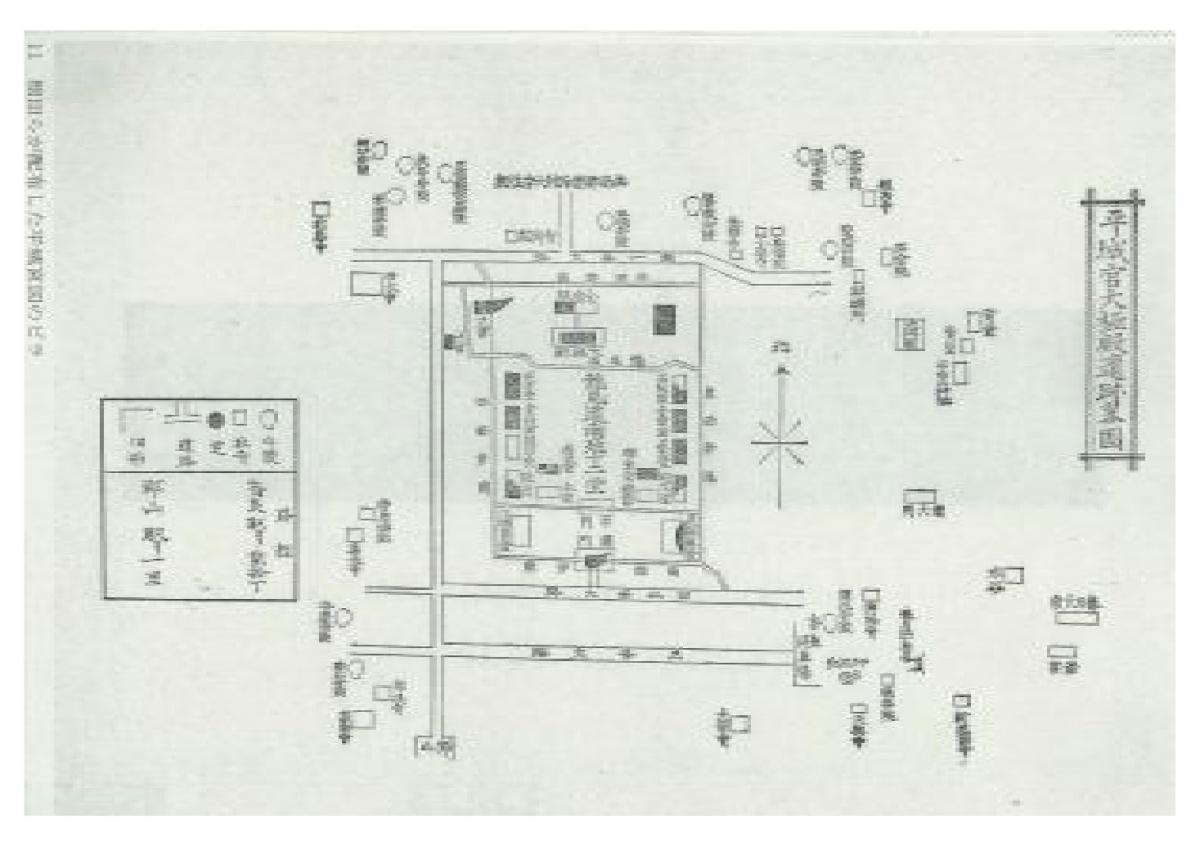
○ Heijo Jingu Zumen(Heijo Shrine Drawing)
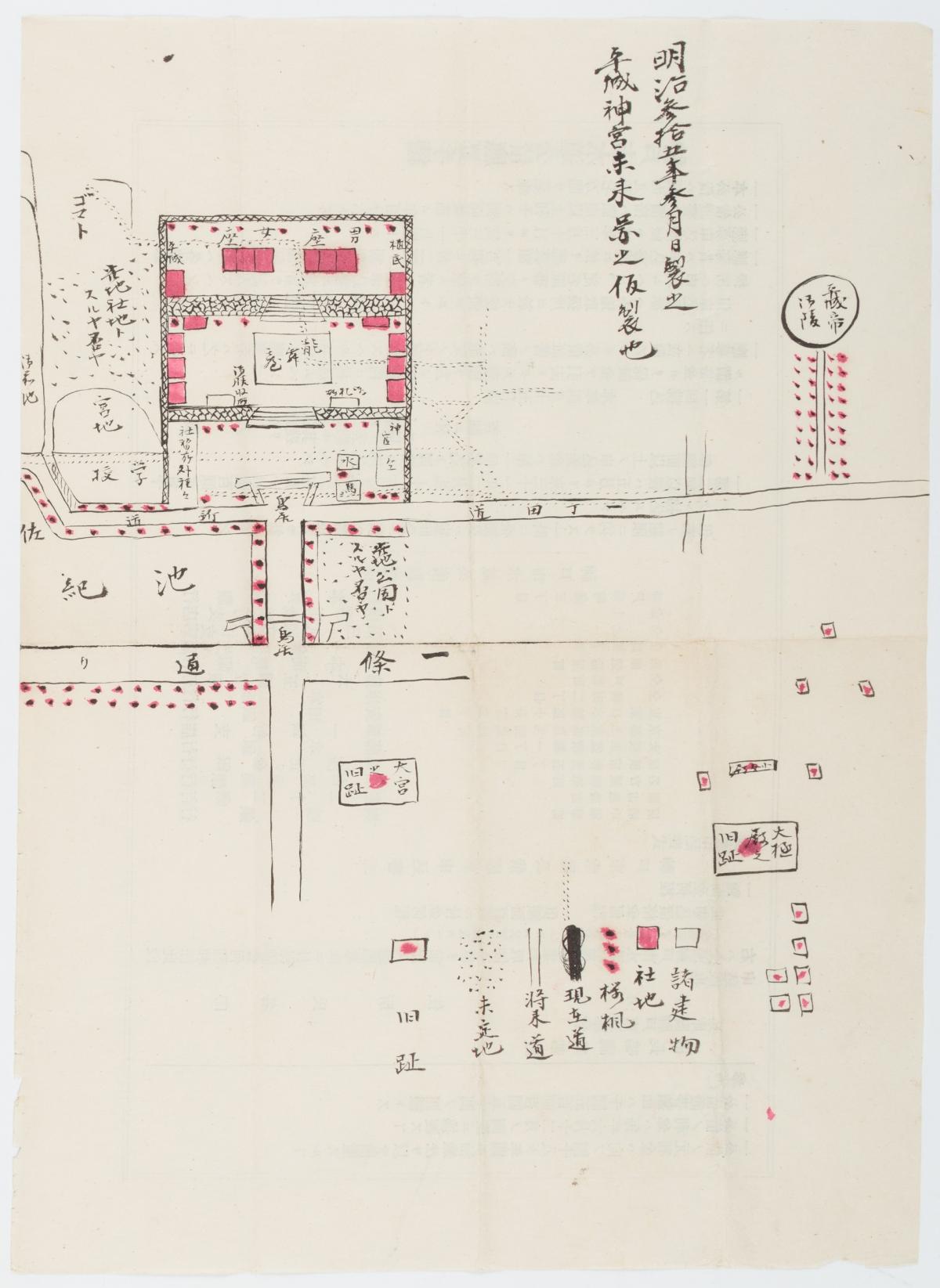
○ Mizobe Bunshiro's Diary
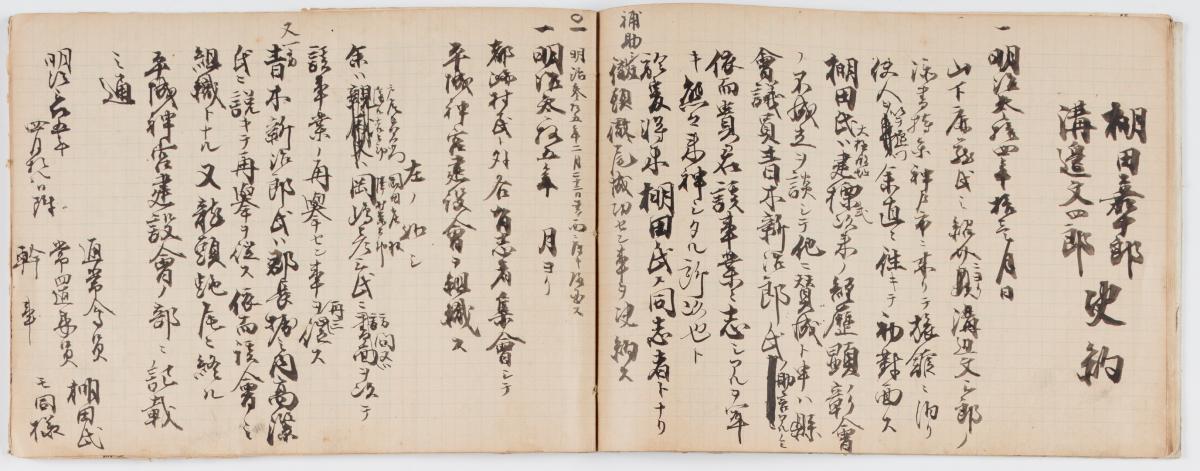
○ Tanada Kajuro Materials Heijo Kyushi Kinen Yokusan Bo (Heijo Historic Remains Memorial Support Book)
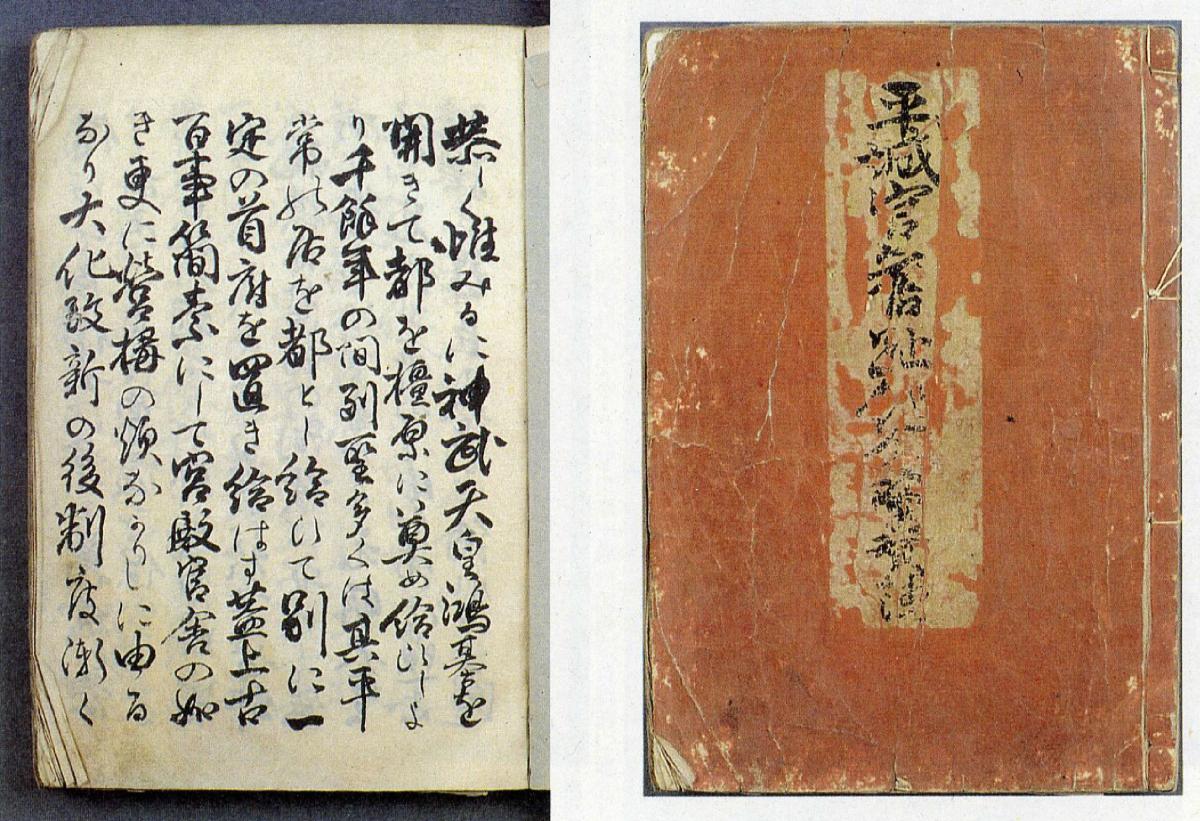
○ Tanada Kajuro Materials Heijo Kyushi Kenpi Keikaku Shuisho (Heijo Historic Remains Monument Erection Plan Prospectus)
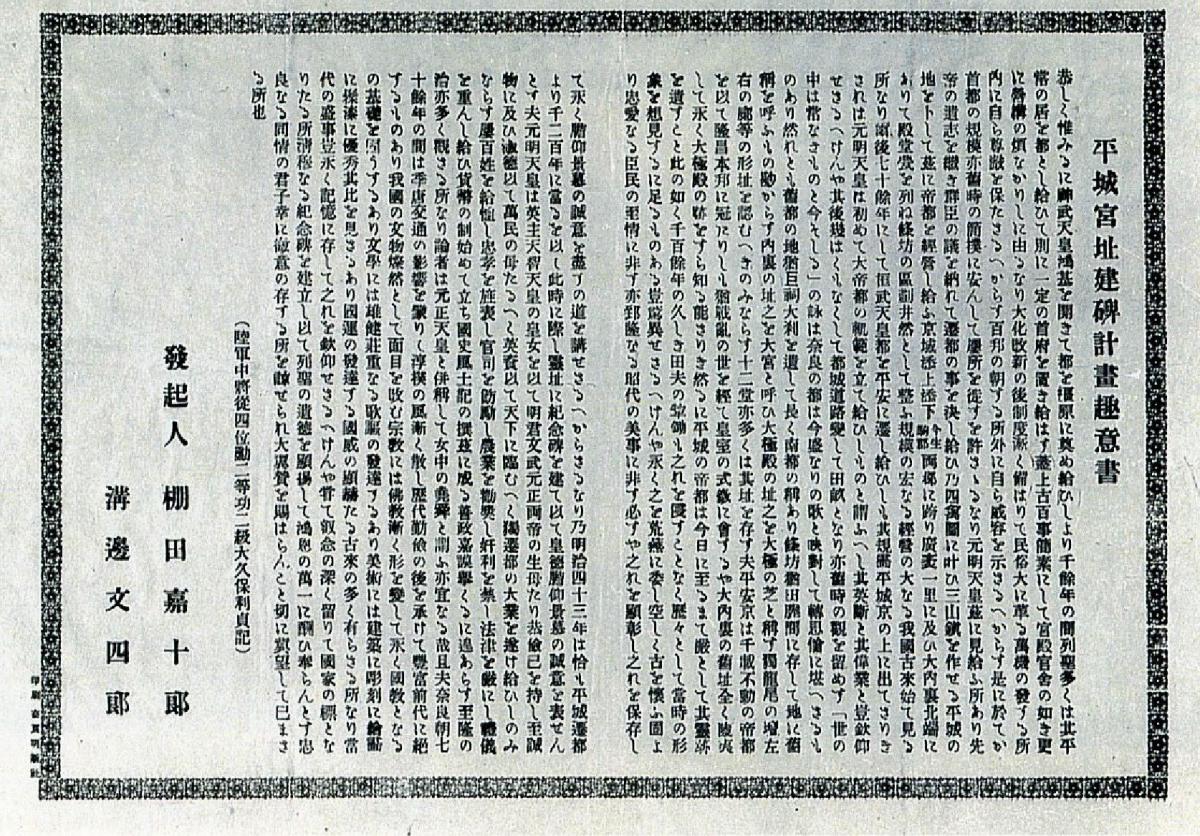
○ A stone etched by Tanada Kajuro in front of JR Nara Station
A signpost to the Nara Palace Site laid by Tanada Kajuro in 1912 was moved, and now lies in the plaza in front of JR Nara Station.
○ Excavations Begin
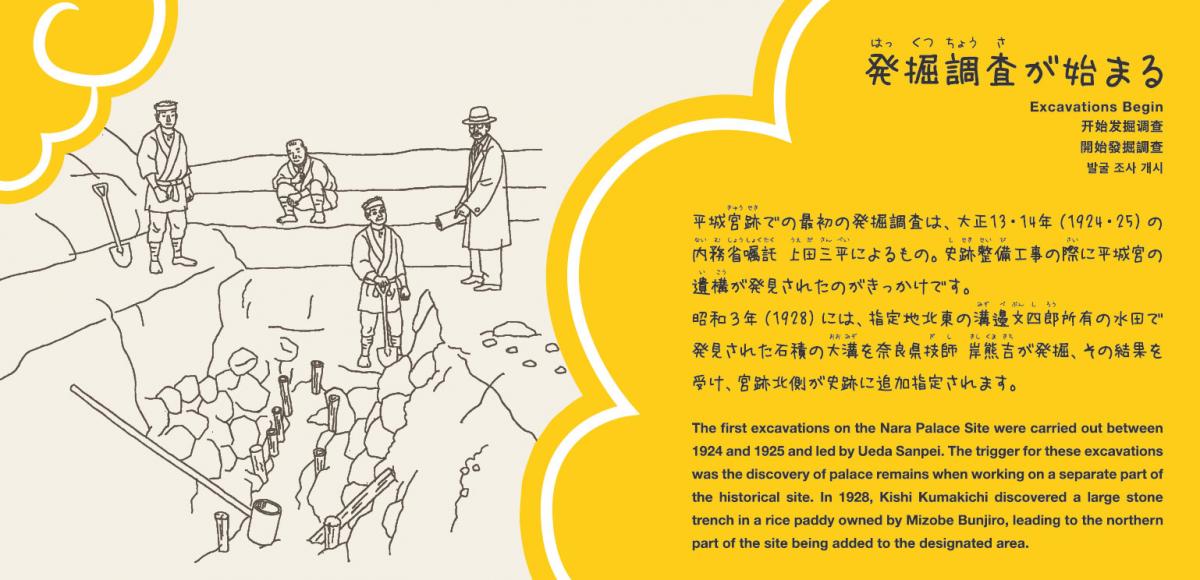
The first excavations on the Nara Palace Site were carried out between 1924 and 1925 and led by Ueda Sanpei. The trigger for these excavations was the discovery of palace remains when working on a separate part of the historical site. In 1928, Kishi Kumakichi discovered a large stone trench in a rice paddy owned by Mizobe Bunshiro, leading to the northern part of the presumed site being added to the designated area.
○ August 1955
First investigation conducted by the Nara National Research Institute for Cultural Properties: Southeast corner of the Latter Imperial Audience Hall
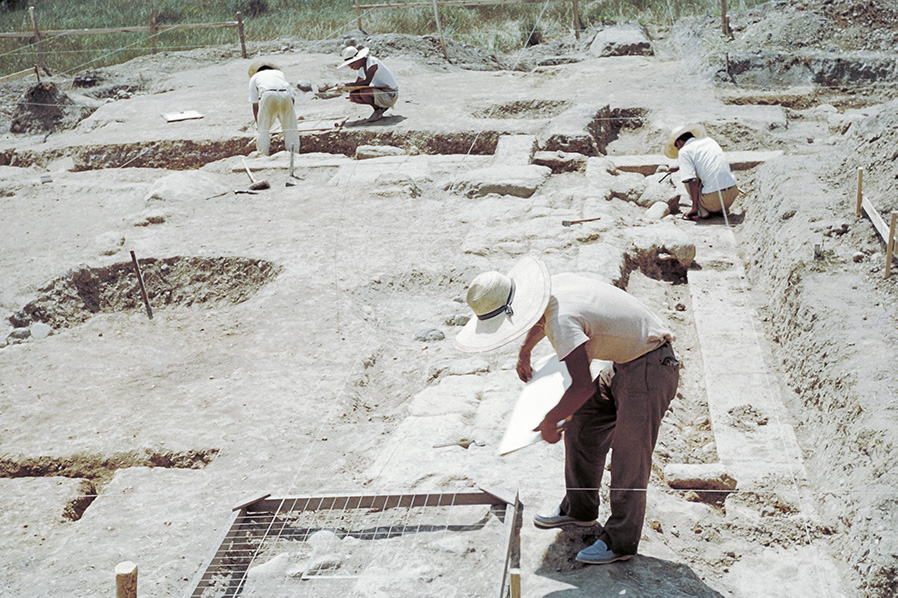
○March 1964
14th investigation: Discovery of a well using hayato shields as supports, at the scheduled construction site of a Kintetsu Railways train car inspection garage
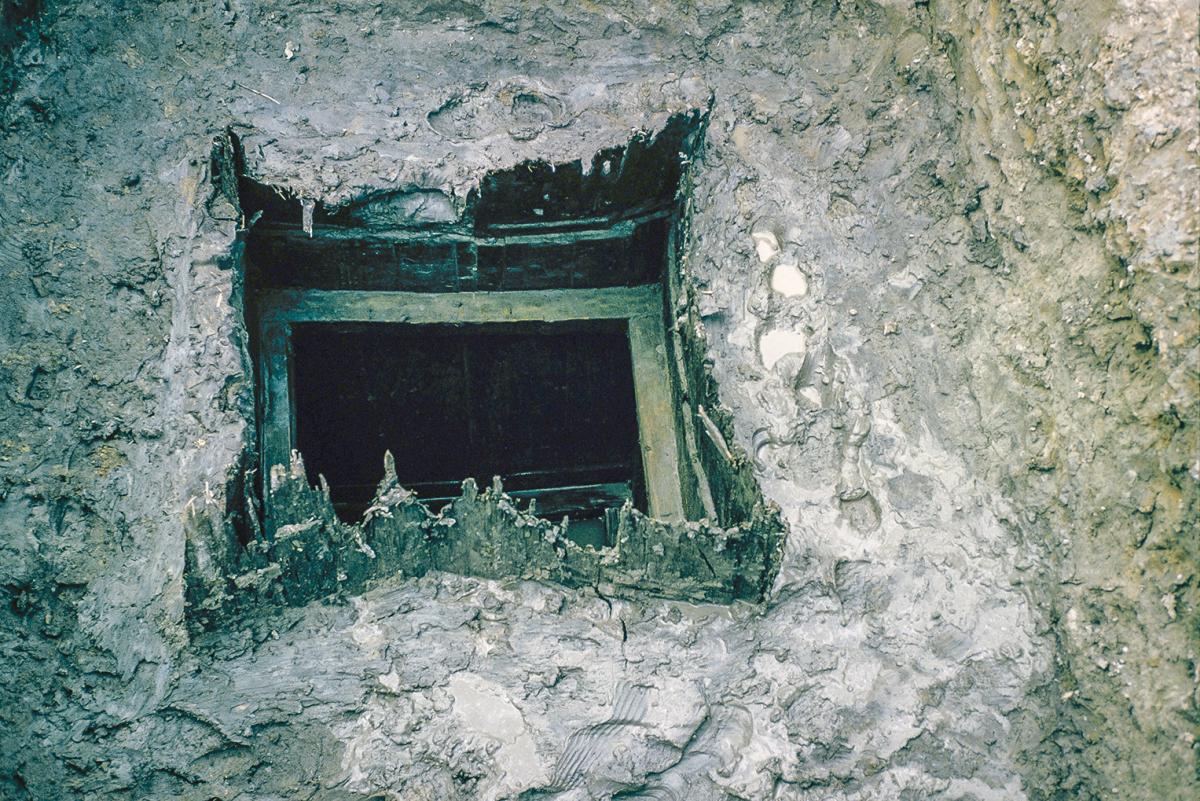
○ March 1966
39th investigation: Excavation of the Chiisakobe-mon Gate (confirming the presence of the East Palace on a flared area expanding eastward from Nara Palace)
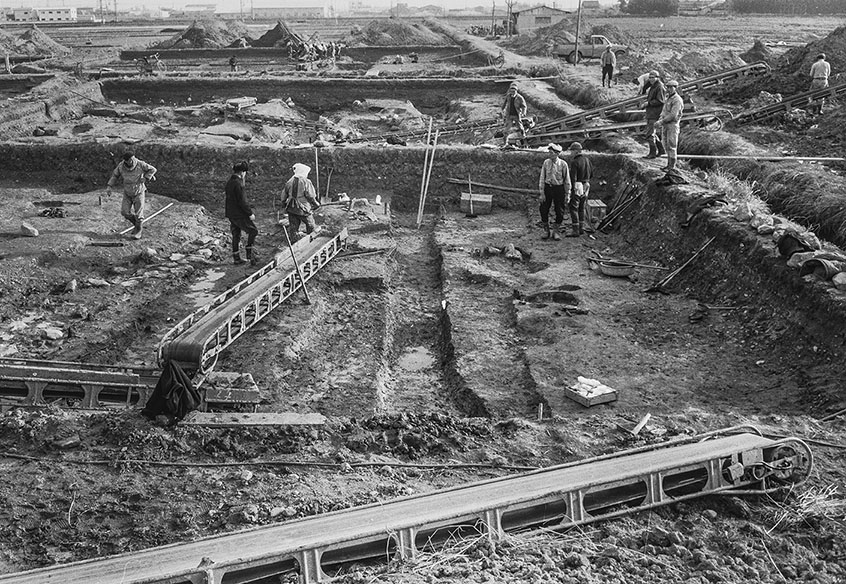
○ April 1990
211th investigation: Detailed investigation of the Suzaku-mon Gate platform
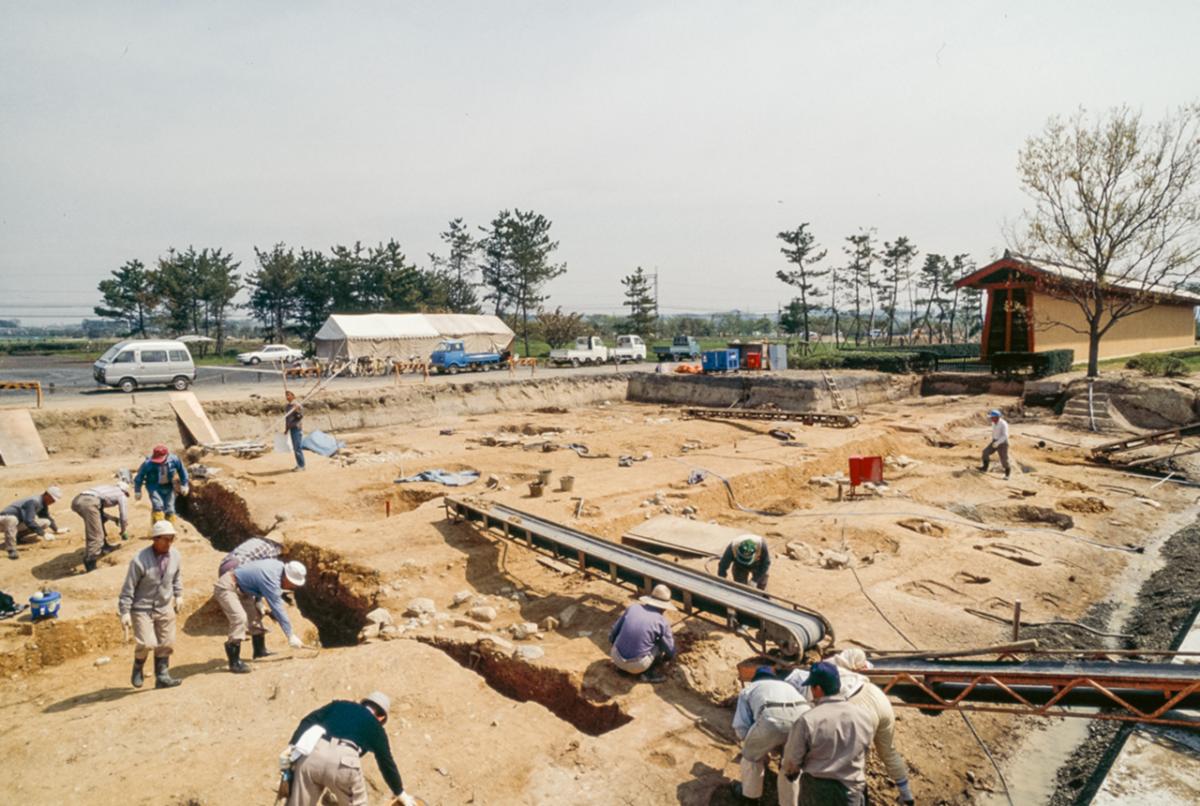
○ May 2012
491st investigation: Excavation and artifact unearthing work prior to construction of the Heijokyu Izanai-kan (Guidance Center)
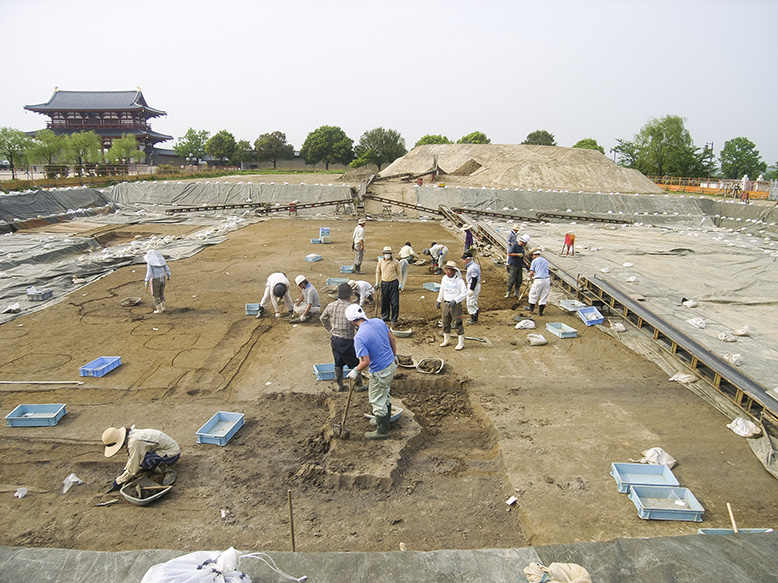
■ Video : Preserving and Conveying the Legacy of Nara Palace
For over 1,000 years, the remains of Nara Palace rested peacefully beneath rustic lands that were gradually transformed into rice fields. This situation changed toward the end of the Edo Period, beginning with a measuring survey conducted by a man named Kitaura Sadamasa. In the Meiji Period, architect Sekino Tadashi announced related research findings in a newspaper article. That prompted Tanada Kajuro, Mizobe Bunshiro and other avid local supporters to organize widespread appeals aimed at preserving the remains of Nara Palace, with such efforts instrumental in increasing the zeal to explore the site. After World War II, the the Law for the Protection of Cultural Properties was mobilized to designate the remains of Nara Palace as a special historical site. Movements were mustered to nationalize the land, with further excavation and research leading to a steady series of precious discoveries. Surveys and research predominantly by the Nara National Research Institute for Cultural Properties helped further fuel a nationwide mood in support of preserving the remains. Subsequent projects have encompassed restoration and preservation of Suzaku-mon Gate, the To-in Teien (East Palace Garden) and other areas of the complex. Here, we track the major discoveries and endeavors up to the present day.

